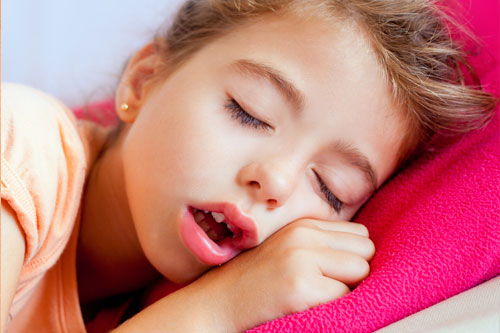Not only does Sleep Disordered Breathing present risks to your child’s health and wellbeing, but it is also quite common among children, with up to 90 percent of them exhibiting at least one symptom associated with this condition.
Fortunately, the HealthyStart system offers parents a non-invasive treatment option to eliminate Sleep Disordered Breathing and the problems it can create for their children. Don’t hesitate to ask us for more information if you suspect that your child has this disorder.
Sleep Disordered Breathing is typically associated with underdeveloped dental arches, which subsequently compromise the child’s airway. The effects of that compromised airway are particularly pronounced while the child is asleep and cannot compensate for them.
The following issues can lead to underdeveloped dental arches:
When underdeveloped dental arches result in a compromised airway, the following symptoms may be evidence of it:
When these conditions interfere with your child’s ability to breathe properly while they are asleep, symptoms of Sleep Disordered Breathing are highly likely to occur.

It is possible to address the underlying conditions with the jaw and airway that cause Sleep Disordered Breathing. The HealthyStart system uses custom-designed removable appliances to correct the issues that are affecting your child’s ability to breathe while they are asleep.
HealthyStart is a multi-phase treatment system incorporating habit correction appliances, which focus on overcoming the oral habits contributing to the Sleep Disordered Breathing, and guiding appliances that direct the teeth into the proper positions and facilitate optimal jaw development.
The custom-designed appliances are well-tolerated by children in addition to being highly effective. They are FDA-approved and BPA-free, silicone-free and latex-free.
Furthermore, HealthyStart is not disruptive to your child’s daily routine. The appliance is worn for only an hour or two during the day and for the duration of the time that your child is asleep.